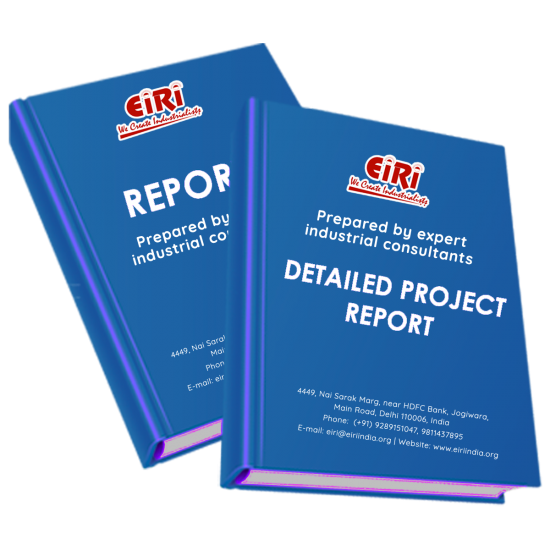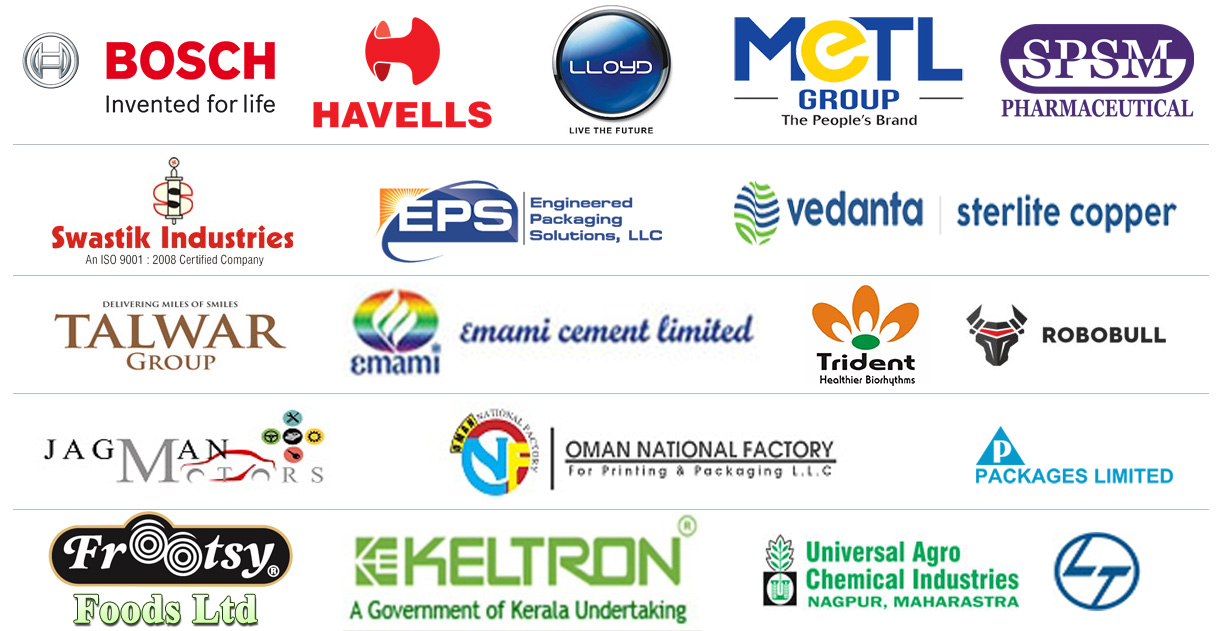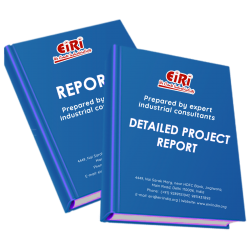Detailed Project Report on Particle Board from Rice Husk

- More than 45 years of experience
- Managed by expert industrial consultants
- ISO 9001-2015 Certified
- Registered under MSME, UAM No: DL01E0012000
- 24/5 Research Support
Get your quesries resolved from an industry expert. Ask your queries before report or book purchase. - Custom Research Service
Speak to the our consultant to design an exclusive study to serve your research needs. - Quality Assurance
All reports are prepared by highly qualified consultants & verified by a panel of experts. - Information Security
Your personal & confidential information is safe & secure.
PARTICLE BOARD FROM RICE HUSK
[EIRI/EDPR/1499](J.C.285INR, 288US$)
INTRODUCTION
Rice husk received from the rice mill is winnowed and wind-sifted and then coated with synthetic resin adhesive in specially designed adhesive applicators. The resin coated husk is spread as an even mat on support cauls & consolidated under heat and pressure in a hydraulic hot press. The hot pressed panels are cooled and trimmed to the desired dimension. Unit market price in India: US$ 0.60 per sq.ft.
Application/Uses:
Construction industry, construction materials, furniture industry: wall panelling, furniture, false ceilings, roofing panels, insulation, partitioning flooring & general purpose etc.
Advantages:
Waste Utilisation: agricultural wastes (rice husk) are used as input. High quality product; termite & fire resistant products; durable product; adequate bond strength, dimensional stability, rodent resistant, decay resistant product.
Rice Husk Particle Board
Rice growing nations all over the world face monumental problems in disposal of rice husk waste, which is a serious environmental hazard, if it is burnt. The technology for manufacture of Rice Husk Particle Board, developed at the Indian Plywood Industries Research Institute, Bangalore has emerged as one of the best solutions to this problem as it helps to maintain the ecobalance and preserves the eco-system. Patents have been filed in India and many other rice growing countries.
This board has emerged as a versatile substitute for wood in a wide range of applications. Moreover, these boards can also be made decorative. The process has been licensed to several firms in India and a turnkey plant has been set up in Malaysia. The firm has also produced floor tile (out of rice husk), fire resistant doors etc. having granite like finish. What is more, the licensee of the technology has helped to build up a large number of low cost houses after the Gujarat earthquake.
Particle board is as the name suggests a board made of particles of wood obtained mechanically without destroying the inherent character of wood. This new industry initially was started primarily with a view to utilize wood waste. Wood that was left in the forest being unsuitable for lumber industry and wood that was thrown away as waste in various wood industries, (e.g. sawmills, furniture making plywood Industries) could be utilized in making particle board. It may be mentioned here that fiber board also utilizes the same wood waste, the wood is converted into pulp and pressed the bond being obtained mainly from the natural lignin present in wood. In case of particle board, the bond is obtained by using an organic binder-synthetic resin adhesive. The accepted definition of particle board is "A sheet material manufactured from small pieces of wood on other ligno-cellulosic materials, (e.g. chips, flakes, splinters, strands, shives etc.) agglomerated by use of an organic binder together with one or more of the following agents heat, pressure, moisture a catalyst etc.
The first plant to produce particle board commercially was build in Bremen, West Germany in 1941. The first three layer particle board is marketed in Switzerland in 1945, the first particle board plant was based on flax straw. Particle boards find extensive use in the building industry, furniture industry, cabinet and automobile construction. Large size panels can also be manufactured at economic costs.
The wood after debarking is converted into chips of suitable size. The chips are dried to the appropriate moisture content. The dried chips are then mixed with adhesive. Storage silos are placed in the between different stages to make each operation independent of the other. In the flat platen process the mixture is spread on caul plates in forming machine to appropriate thickness. The mat is cold pressed and then loaded onto hot press. In the hot press the mats are subjected to a high pressure and temperature so that the synthetic resin is introduced between two heated plates and hammer at regular intervals to form a board which goes out at the other end continuously. The boards are unloaded and sent through the sanding and sizing machines.
Most particle boards produced is in the intermediate density range from 0.40 to 0.80 g/cm3, low density boards in the range from 025 to 0.40 g/cm3 are insulating type whereas high density boards in the range from 0.80 to 1.20 g/cm3 are called hard board type.
COST ESTIMATION
Plant Capacity 2 MT/Day
Land & Building (3000 sq.mt.) Rs. 3.07 Cr
Plant & Machinery Rs. 28.25 Lac
Working Capital for 2 Months Rs. 1.04 Cr
Total Capital Investment Rs. 4.51 Cr
Rate of Return 35%
Break Even Point 66%
CONTENTS
INTRODUCTION
RAW MATERIAL
LOCATION OF THE PLANT
BIS SPECIFICATIONS FOR WOOD PARTICLE BOARDS DESIGNATION OF PARTICLE BOARDS FOR GENERAL PURPOSES
THE FOLLOWING TOLERANCES ON THE DIMENSIONS OF FINISHED BOARDS SHALL BE PERMISSIBLE
STRENGTH & OTHER CHARACTERISTICS OF VARIOUS TYPES OF WOOD PARTICLE BOARDS
STORAGE AND WORKING OF WOOD PARTICLE BOARDS
MARKET SURVEY
PRESENT STATUS
100% EXPORT ORIENTED UNITS (100% EOU)
PRERSENT MANUFACTURERS/EXPORTERS/SUPPLIERS OF PARTICLE BOARDS
USES & APPLICATIONS
FORMULATION FOR PARTICLE BOARD
MANUFACTURING PROCESS
WOOD REQUIREMENTS:-
CHIP PREPARATION:-
CHIPPING:-
DRYING:-
SECONDARY REDUCTION:-
SCREENING:-
BLENDING:-
A) ADHESIVE PREPARATION:-
ADHESIVE MIXING:-
(A) MAT FORMATION:-
(B) COLE PRESSING:
(C) HOT PRESSING:-
SANDING AND FINISHING:-
FLOW SHEET FOR PARTICLE BOARD MANUFACTURE
SUPPLIERS OF PLANT & MACHINERY FOR PARTICLE BOARD
MANUFACTURERS OF RAW MATERIAL AND CHEMICALS USED
UREA FORMALDEHYDE
FORMALDEHYDE
AMMONIUM SULPHATE
PARAFFIN WAX
MANUFACTURERS OF PENTA-CHLOROPHENOL
PHOSPHATIC CHEMICALS
MANUFACTURERS & SUPPLIERS OF AMMONIUM CHLORIDE
LIST OF THE IMPORTER
PRINCIPLES OF PLANT LAYOUT
PLANT LOCATION FACTORS
APPENDIX – A:
01. PLANT ECONOMICS
02. LAND & BUILDING
03. PLANT AND MACHINERY
04. OTHER FIXED ASSESTS
05. FIXED CAPITAL
06. RAW MATERIAL
07. SALARY AND WAGES
08. UTILITIES AND OVERHEADS
09. TOTAL WORKING CAPITAL
10. TOTAL CAPITAL INVESTMENT
11. COST OF PRODUCTION
12. TURN OVER/ANNUM
13. BREAK EVEN POINT
14. RESOURCES FOR FINANCE
15. INSTALMENT PAYABLE IN 5 YEARS
16. DEPRECIATION CHART FOR 5 YEARS
17. PROFIT ANALYSIS FOR 5 YEARS
18. PROJECTED BALANCE SHEET FOR (5 YEARS)
How to Make Project Report?
Detailed Project Report (DPR) includes Present Market Position and Expected Future Demand, Technology, Manufacturing Process, Investment Opportunity, Plant Economics and Project Financials. comprehensive analysis from industry covering detailed reporting and evaluates the position of the industry by providing insights to the SWOT analysis of the industry.
Each report include Plant Capacity, requirement of Land & Building, Plant & Machinery, Flow Sheet Diagram, Raw Materials detail with suppliers list, Total Capital Investment along with detailed calculation on Rate of Return, Break-Even Analysis and Profitability Analysis. The report also provides a birds eye view of the global industry with details on projected market size and then progresses to evaluate the industry in detail.
We can prepare detailed project report on any industry as per your requirement.
We can also modify the project capacity and project cost as per your requirement. If you are planning to start a business, contact us today.
Detailed Project Report (DPR) gives you access to decisive data such as:
- Market growth drivers
- Factors limiting market growth
- Current market trends
- Market structure
- Key highlights
Overview of key market forces propelling and restraining market growth:
- Up-to-date analyses of market trends and technological improvements
- Pin-point analyses of market competition dynamics to offer you a competitive edge major competitors
- An array of graphics, BEP analysis of major industry segments
- Detailed analyses of industry trends
- A well-defined technological growth with an impact-analysis
- A clear understanding of the competitive landscape and key product segments
Need Customized Project Report?
- Ask for FREE project related details with our consultant/industry expert.
- Share your specific research requirements for customized project report.
- Request for due diligence and consumer centric studies.
- Still haven't found what you're looking for? Speak to our Custom Research Team
About Engineers India Research Institute:
Note: We can also prepare project report on any subject based on your requirement and country. If you need, we can modify the project capacity and project cost based on your requirement.
Our Clients

Our Approach
- Our research reports comprehensively cover Indian markets (can be modified as per your country), present investigation, standpoint and gauge for a time of five years*.
- The market conjectures are produced on the premise of optional research and are cross-accepted through associations with the business players
- We use dependable wellsprings of data and databases. What's more, data from such sources is handled by us and incorporated into the report
Why buy EIRI reports?
- Our project reports include detailed analysis that help to get industry Present Market Position and Expected Future Demand.
- Offer real analysis driving variables for the business and most recent business sector patterns in the business
- This report comprehends the present status of the business by clarifying a complete SWOT examination and investigation of the interest supply circumstance
- Report gives investigation and top to bottom money related correlation of real players/competitors
- The report gives gauges of key parameters which foresees the business execution






















